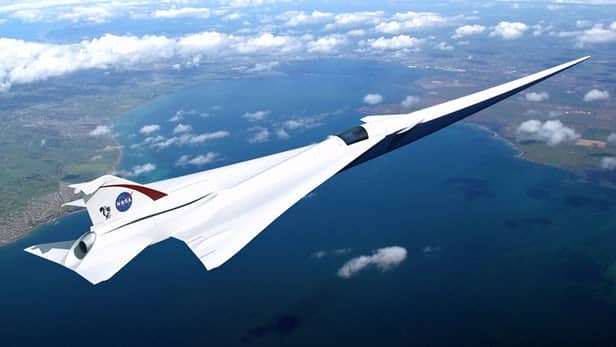Lockheed Martin and NASA are bringing supersonic travel into the commercial aviation industry. The company was given a $250 million contract to develop tech for NASA’s Low-Flight Boom program. Lockheed has now committed to a timeline for the maiden test flight of its X-59 Quiet Supersonic Technology (QueSST) aircraft. This aircraft, Lockheed claims, holds the technology to reduce the noise produced while it breaks the sound barrier.
Supersonic flights have been possible for quite some time, but they were limited to flying overseas only due to the sonic booms they create while breaking the sound barrier. Present laws have prohibited these aircraft from flying over land. Whereas X-59 has the technology to reduce that ‘boom’ to a ‘thud,’ much more like a car door slamming. The aircraft cruises at an altitude of 55,000 feet which is approximately 25,000 feet higher than a standard commercial Airbus.
NASA administrator Jim Bridenstine said in a press conference, “This aircraft has the potential to transform aviation in the United States and around the world by making faster-than-sound air travel over land possible for everyone. We can’t wait to see this bird fly!” NASA will conduct test flights of the X-59 above the US cities to check how quiet the plane is. The data obtained from the tests will be sent to the data regulators. The agency stated, “Using this data, new sound-based rules regarding supersonic flight over land can be written and adopted, which would open the doors to new commercial cargo and passenger markets to provide faster-than-sound air travel.”
If NASA and Lockheed could overturn the regulations in practice currently, they will be able to bring the first commercially operable supersonic plane to the market since the last launch of Concorde. The X-59 is expected to have a long, slender design like its predecessor. According to the manager of the company’s Low Boom Flight Demonstrator program, Peter Iosifidis, the angular design is paramount in helping the aircraft achieve maximum speed. He said in a statement, “The long, slender design of the aircraft is the key to achieving a low sonic boom. As we enter into the manufacturing phase, the aircraft structure begins to take shape, bringing us one step closer to enabling supersonic travel for passengers around the world.”

